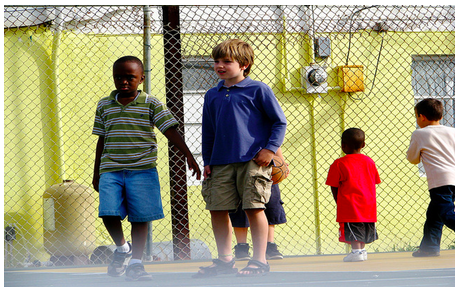CommentsOTHER WORDS-When I teach about race in sociology classes, I often begin by asking students how and when the idea of race came about.
Lesson one? Race is not a biological reality — it’s a social construct.
That doesn’t mean there’s no biological basis to it at all — anyone can tell the difference between different skin tones and understand the role genetics play in passing on traits. However, if you were to try to divide the world into discrete racial categories based on genes, you couldn’t.
Where, exactly, in North Africa would you draw the line between black people and white people?
Where in Central Asia is the split between Middle Eastern or European and Asian?
The racial categories we use today were created by humans, and they unfolded as they did because of our history. When Europeans came to this continent, taking land from (and often killing) Native Americans and enslaving Africans, they needed a justification and organization for their conquest and domination. They invented race to do that job.
Just because race is not a biological reality doesn’t mean it doesn’t matter — the consequences, after all, are all too real. One person could enslave another because of it.
Why do some racial groups do better than others in America? It’s not because one is genetically or culturally superior. It’s because people of color have been systematically disadvantaged throughout American history while white people have been advantaged over them.
When I teach this, I spend a lot of time detailing how as recently as a few decades ago, government programs facilitated white families owning their own homes in segregated neighborhoods while denying people of color opportunities for home ownership.
Many of the people who were helped or harmed by these policies are still alive, and they and their descendants are still affected in their wealth, health, education, and employment.
Obviously, America has come a long way from the 1600s — or even from the 1960s. But the El Paso shooter and the policies of the Trump administration show a continuity with America’s dark past.
In the first half of the 20th century, our immigration policies reflected the notion of a white America, limiting or prohibiting people of color from coming to this country. The El Paso shooter believed in a white America. But Trump’s immigration policies validate that idea too.
Trump isn’t against all immigrants, seeing how he keeps marrying them. And his mom is one. But his Scottish mother and Czech and Slovenian wives fit within the notion of a white America. The people targeted in the recent ICE raids do not.
My great grandparents were poor, hardworking Eastern Europeans. The generations who came after them grew up attending American schools, holding jobs, and paying taxes. There’s no reason a Honduran, Filipino, or Mexican family arriving today cannot follow the same path my family did — no reason, that is, except discrimination on account of their skin color.
If we accept that Americans are people of all races, colors, and creeds, and if we accept America as a nation made up largely of immigrants, then all people can find a place here. If there is no “us” and “them,” then “we” don’t have to worry about “them.”
We can’t ignore the white supremacy baked into anti-immigrant notions that see people of color as un-American or as threats to America. When some advocate hateful ideas, others will act on them with violence.
OtherWords columnist Jill Richardson is pursuing a PhD in sociology at the University of Wisconsin-Madison. She’s currently based in Montana. Distributed by OtherWords.org.) Photo: Lorenia/Flickr. Prepped for CityWatch by Linda Abrams.
















